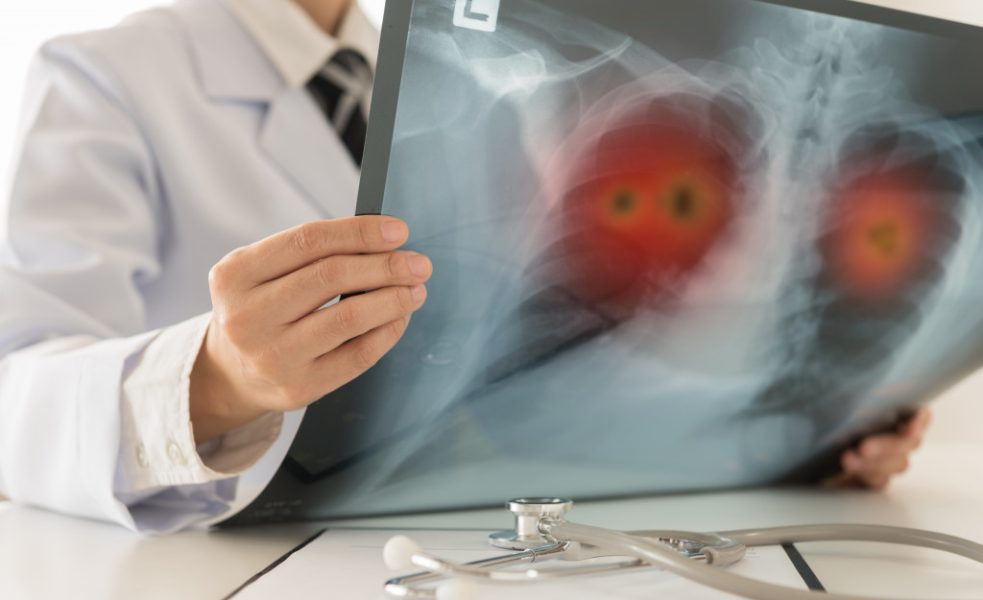Lung cancer is the leading cause of cancer death in the United States for both men and women. According to the American Cancer Society, about 234,000 new lung cancer cases are expected to be diagnosed annually. Therefore, it’s essential to learn the signs and symptoms of lung cancer so you can catch it early and get treatment as soon as possible. Keep reading to learn everything you need to know about lung cancer.
What is Lung Cancer?
Lung cancer begins when cells in the lungs start to grow uncontrollably. The two main types of lung cancer are small-cell lung cancer and non-small-cell lung cancer. Small cell lung cancer is less common but more aggressive than non-small cell cancer. On the other hand, non-small cell cancer is more common and tends to grow more slowly.
Risk Factors
Lung cancer has multiple risk factors. Here are some of the most common:
Genetics
Like many cancer-related diseases, genetics play a role in the development of lung cancer. If someone in your immediate family has had lung cancer, there is a higher chance that you may develop it as well.
Smoking
The leading risk factor for lung cancer is smoking cigarettes. About 80-90% of all cases are caused by tobacco smoking. Even those who quit smoking have a higher risk of developing lung cancer than those who have never smoked. Exposure to secondhand smoke can also increase your risk.
Environmental Exposure
Those who work in specific industries, such as mining or construction, may be exposed to carcinogenic substances that could potentially lead to the development of lung cancer. In addition, exposure to radon gas, a naturally occurring gas found in homes, can also increase the risk of lung cancer.
Signs and Symptoms
The signs and symptoms of lung cancer vary depending on how advanced the disease is. In its early stages, lung cancer may not cause any symptoms. However, as it progresses, it may cause coughing, shortness of breath, chest pain, wheezing, weight loss, and fatigue. If you experience any of these symptoms, you must see a doctor immediately so they can determine whether or not you have lung cancer.
Diagnosis
Lung cancer is typically diagnosed with a combination of various exams. Here are some of them:
Ultrasound
One of the preliminary tests for lung cancer is ultrasound. This exam looks into the chest to see any abnormalities, such as tumors. You can book a private ultrasound scan in your nearest hospital or clinic. Additionally, you might get it done through your healthcare provider or on an online medical booking site.
CT scan
A CT scan takes several X-rays to create a detailed image of the inside of the body. This allows doctors to see the location and size of tumors in the lungs.
Biopsy
During a biopsy, tissue or cells are removed from the lungs and examined under a microscope to determine whether cancer cells are present. This can confirm a diagnosis of lung cancer.

Treatment
There are various treatments for lung cancer, and it can depend on the stage you are in. However, here are five of the most common treatments for the disease:
Surgery
A surgeon will remove part or all of the affected lung during surgery. This can be done through traditional open surgery or minimally invasive techniques. It’s one of the most effective forms of treatment, but only when the cancer is detected early on.
Chemotherapy
This treatment uses drugs to kill cancer cells. It is usually given intravenously but can also come in pill form. The disadvantage of this treatment is that it comes with multiple side effects, such as nausea and hair loss.
Radiation Therapy
Radiation therapy uses high-energy beams, such as X-rays, to target and kill cancer cells. Medical professionals may use it before or after surgery to shrink tumors or help prevent cancer from spreading.
Targeted therapy
Targeted therapy drugs target specific abnormalities in the cancer cells, allowing them to grow and divide rapidly. As a result, these drugs can slow down tumor growth and may even shrink tumors.
Immunotherapy
Immunotherapy boosts the immune system to fight off cancer cells. In addition, it helps the immune system recognize and attack cancer cells. This treatment is typically used in conjunction with other forms of therapy.
Lung cancer is a severe disease that can be deadly if not caught early enough. However, many treatment options are available if you are diagnosed with lung cancer. Therefore, it’s essential to be aware of the signs and symptoms of lung cancer so you can see a doctor as soon as possible if you think you may have the disease. If you have any questions or concerns about lung cancer, don’t hesitate to speak with your doctor.



